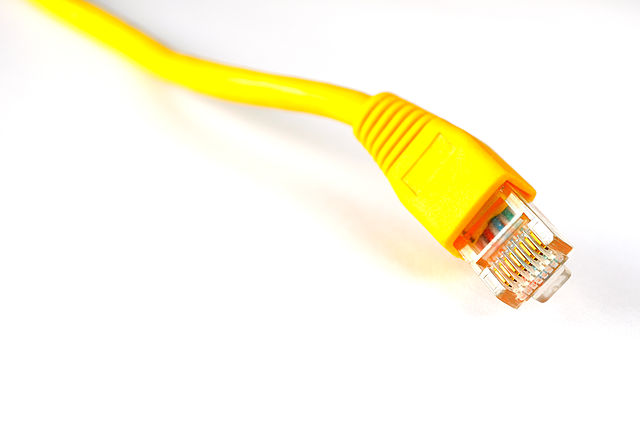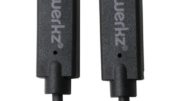Network cables are awesome, but they’re not perfect. There’s a limitation on how long those skinny little wires are going to hold on, even if you pay for the best possible ones. Traditionally, that limit is listed at 100 meters (328 feet) but that number can be lower depending on several factors such as the way the cable is made and the electric fields the cable needs to pass through. On the other hand, I’ve seen people run Ethernet with reckless abandon and I’m sure they got more than 500 feet out of a run. Still, it’s good to stay with recommended lengths if you want a nice stable system.
What can you do beyond 100 meters?
If you choose to stay with a wired solution, you can go to Ethernet over Fiber (100-Base-FX). This solution lets you replace the regular “category” cables with fiber for long runs. The maximum recommended run is 400 meters (about 1,600 feet) so if run the longest possible “category” cable followed by the longest possible fiber strand and the longest possible “category” cable on the other side, that gives you the ability to go 600 meters, about 2,400 feet. That should be enough in most cases. Solid Signal has a wide selection of 100BaseFX products that make it easy to connect your wired network over long distances.
Fiber is just as easy to work with as regular cable but it does take some special skills and a lot of expensive tools. So, if you don’t need a lot of long runs, you’re probably better off finding a contractor to do that part of the wiring.
Going even further
If you need to go further, you can use something like Ubiquiti’s LOCOM5 Nanostations that make it easy to connect two points up to 15,000 meters (over 9 miles) away as long as they can see each other. They’re a super-inexpensive way to replace Ethernet cables over long runs. Using Nanostations makes it easy to connect two buildings over reasonable distances without having to bury wires. Technically this is not an Ethernet solution just as Wi-Fi isn’t technically Ethernet. But, that sort of distinction is more for engineers than other folks.
Why would anyone go wired?
I can hear you saying, “If wireless is so easy and cheap, why would anyone use wired?” Good question. Wired technology came first, and as such it was more expensive from the get-go. More importantly, though, fiber is secure. It can be buried and the transceivers that connect from copper to fiber can be put in locked closets. This doesn’t mean it’s completely hackproof. That said, it’s a lot harder to break into a wired signal than a wireless one. If absolute security is your bag, you need to use fiber.
Wired technology also works in areas where there is a lot of RF interference. Wi-Fi range can be reduced in office situations. Offices use aluminum studs and generally have a lot of cable in the walls. This can really limit Wi-Fi range for those who need it.
Either way, though, the limitations of plain copper Ethernet cables shouldn’t concern you, because Solid Signal has easy ways to extend your network as far as you need it to go! Call us at 888-233-7563 or fill out the form below and one of the team will get back to you!





